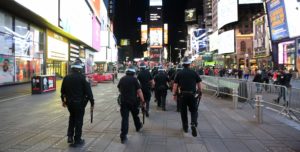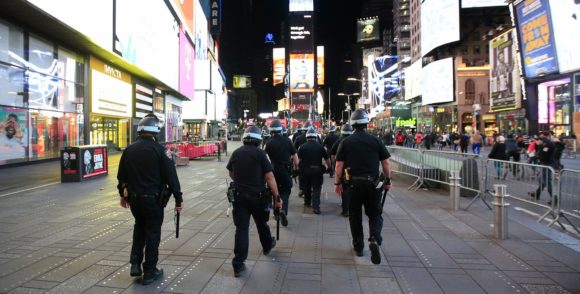The New York City Police Department enacted new disciplinary rules on Friday that call for terminating police officers found to use racial profiling or “excessive deadly force.”
The so-called “disciplinary matrix,” as Mayor Bill de Blasio called it, also lays out clear punishment for other offenses. Officers will be suspended without pay for 20 days in cases of insubordination or reckless driving, and 10 days for failure to report a lost gun. The punishments may be adjusted based on mitigating factors or aggravating circumstances such as repeat offenses, de Blasio said in a statement.
However, the city’s police commissioner, who has authority to make the final decision on discipline, may choose a different punishment that must be explained as part of the case record. Police officers can still make their case against these disciplinary actions.
The new schedule of offenses and punishments came a day after state Attorney General Letitia James sued New York City and its police department for using excessive force and biased law enforcement during Black Lives Matter demonstrations last spring that drew thousands of protesters against racial injustice after the Minneapolis police killing of George Floyd.
Inflicting Harm
“Over the past few months, the NYPD has repeatedly and blatantly violated the rights of New Yorkers, inflicting significant physical and psychological harm and leading to great distrust in law enforcement,” James said after the lawsuit was filed. James called for a court-appointed monitor to oversee department practices during future protests and demonstrations.

The lawsuit outlines what James called a long history of bad policing of protests in the nation’s biggest city, including during anti-war rallies in 2003, the Republican National Convention in 2004 and the Occupy Wall Street protests in 2011. In 2015, the NYPD’s inspector general issued a report concluding that the department’s use-of-force policy was “vague and imprecise, providing little guidance to individual officers on what actions constitute force and providing insufficient instruction on de-escalation,” according to the suit.
The city is also facing a number of suits from civil rights groups and individuals who say they were brutalized by the police during those demonstrations, allegations that were echoed by James’ action this week. Both the attorney general’s and the civil suits take aim at police leadership for their role in suppressing the last year’s protests.
Costly Settlements
The actions threaten to be costly to the city, which is already facing a budget crunch. New York City paid $220 million in settlements for police misconduct in fiscal 2019, the most recent year those numbers are available, according to the city comptroller’s office.
A separate internal investigation de Blasio had requested also found flagrant abuses by the force during the protests, including indiscriminate baton and pepper spray use, inconsistent enforcement of curfews and excessive crowd control that heightened tensions.
Was this article valuable?
Here are more articles you may enjoy.



 Supreme Court Makes It Easier to Sue for Job Discrimination
Supreme Court Makes It Easier to Sue for Job Discrimination  JPMorgan Client Who Lost $50 Million Fortune Faces Court Setback
JPMorgan Client Who Lost $50 Million Fortune Faces Court Setback  Vintage Ferrari Owners’ Favorite Mechanic Charged With Theft, Fraud
Vintage Ferrari Owners’ Favorite Mechanic Charged With Theft, Fraud  Harvard Study Again Stirs the Pot on Demotech Ratings of Florida Carriers
Harvard Study Again Stirs the Pot on Demotech Ratings of Florida Carriers 

